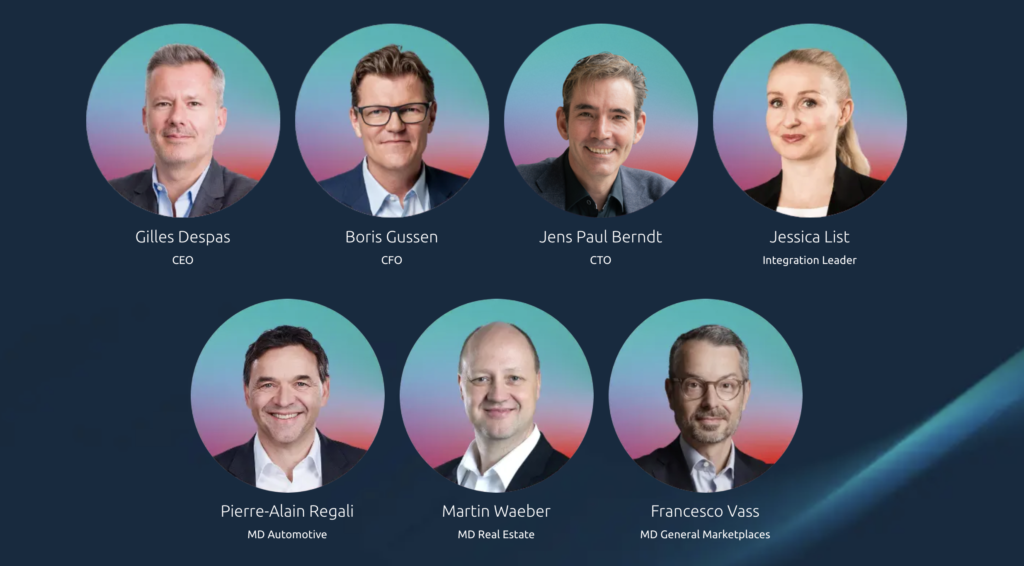Neue Schätzungen der Europäischen Umweltagentur EEA besagen, dass der Konsum von Fast Fashion in Europa rekordverdächtige Ausmasse erreicht hat. Pro Kopf und Jahr werden durchschnittlich 19 kg Textilien konsumiert. Auf dem Online-Marktplatz Ricardo zeigt sich mit einem starken Anstieg an Secondhand-Mode ein nachhaltiger Gegentrend: Im Jahr 2024 wechselten auf Ricardo rund 610’000 Secondhand-Artikel aus der Kategorie «Kleidung & Accessoires» den Besitzer. Das ist ein Wachstum von 31 Prozent innerhalb von zwei Jahren, das die zunehmende Bedeutung von Kreislaufwirtschaft und bewussten Konsum in Form von Secondhand unterstreicht.
Die aktuelle Studie der Europäischen Umweltagentur EEA «Circularity of the EU textiles value chain in numbers» zeigt, dass im Jahr 2022 der europäische Pro-Kopf-Konsum von Textilien 19 kg betrug – das sind 2 kg mehr als im Jahr 2019. Ein Grossteil der konsumierten Textilien landen im Abfall, denn gemäss der EEA-Studie werden nur 22% der Alttextilien gesammelt oder wiederverwendet.
Während die Fast Fashion Industrie weltweit auf Wachstumskurs ist, zeigt sich auf dem Online-Marktplatz Ricardo ein positiver Gegentrend in Richtung Kreislaufwirtschaft: Der Handel von gebrauchter Mode ist in den letzten Jahren kontinuierlich gestiegen. Im Jahr 2024 wurden auf Ricardo rund 1.21 Mio. Secondhand-Artikel in der Kategorie «Kleidung & Accessoires» eingestellt – rund 14% mehr als im Jahr 2023 und 33% mehr als im Jahr 2022. Im letzten Jahr wurden 610’067 der angebotenen gebrauchten Modeartikel erfolgreich verkauft – das sind 13% mehr als im Jahr davor und 31% mehr als im Jahr 2022. Der durchschnittliche Preis eines erfolgreich verkauften gebrauchten Damenmode-Artikels betrug letztes Jahr rund CHF 27.-, während bei der Herrenmode die Secondhand-Artikel für durchschnittlich rund CHF 41.- den Besitzer über Ricardo wechselten. Der nachhaltige Konsum in Form von Secondhand ist also nicht nur ökologisch sinnvoll, sondern schont auch das Portemonnaie.
Zweites Leben von Fast Fashion auf Ricardo
Der weltweite Fast Fashion Boom macht auch nicht vor der Schweiz halt. Anstatt die nicht mehr getragenen Kleidungsstücke jedoch einfach zu entsorgen, nutzen die Schweizer Konsument:innen Ricardo oft als Verkaufsplattform für ihre «abgelegten» Modeartikel. Aktuell sind auf Ricardo rund 24’062 Artikel von H&M sowie 17’478 Artikel von Zara gelistet (bis zu einem Drittel sogar noch im neuwertigen Zustand). Das sind zwei Marken, die exemplarisch für den globalen Fast Fashion Trend stehen und deren Lebensdauer durch den Weiterverkauf auf Ricardo massgeblich verlängert werden kann. Und das schont wertvolle Ressourcen und reduziert den textilen Abfallberg.
«Die aktuellen weltweiten Fast Fashion Trends sind erschreckend. Umso mehr freut uns die positive Entwicklung von Secondhand-Mode. Ricardo gestaltet den Handel von gebrauchten und nicht mehr genutzten Dingen so einfach und sicher wie möglich, denn wir möchten die Kreislaufwirtschaft in der Schweiz weiter fördern», sagt Francesco Vass, Managing Director von Ricardo bei der SMG Swiss Marketplace Group.

Mojca Fuks
Senior Corporate Communications Manager &
Media Spokesperson
Über Ricardo
Ricardo wurde Ende 1999 in Baar (ZG) gegründet. In den vergangenen 25 Jahren hat sich Ricardo zu einer der beliebtesten Online-Marktplätze für Secondhand-Ware im Schweizer E-Commerce-Markt entwickelt. Ricardo gehört zur SMG Swiss Marketplace Group AG.
www.ricardo.ch

